Predictions & Data for this entry
| Model: std | climate: Af, Am, Cfa | migrate: | phylum: |
| COMPLETE = 2.8 | ecozone: TN | food: biCi | class: |
| MRE = 0.090 | habitat: 0iFm, 0iMm | gender: D | order: |
| SMSE = 0.022 | embryo: Fv | reprod: O | family: |
Zero-variate data
| Data | Observed | Predicted | (RE) | Unit | Description | Reference |
|---|---|---|---|---|---|---|
| ab_f1 | 22.16 | 22.47 | (0.01419) | d | mean age at birth, high food | Rezn1996 |
| ab_f2 | 22.66 | 22.66 | (0.0001918) | d | mean age at birth, low food | Rezn1996 |
| Li | 3.77 | 4.121 | (0.093) | cm | maximum standard length | Rezn1996 |
Uni- and bivariate data
| Data | Figure | Independent variable | Dependent variable | (RE) | Reference |
|---|---|---|---|---|---|
| tL_f1 | 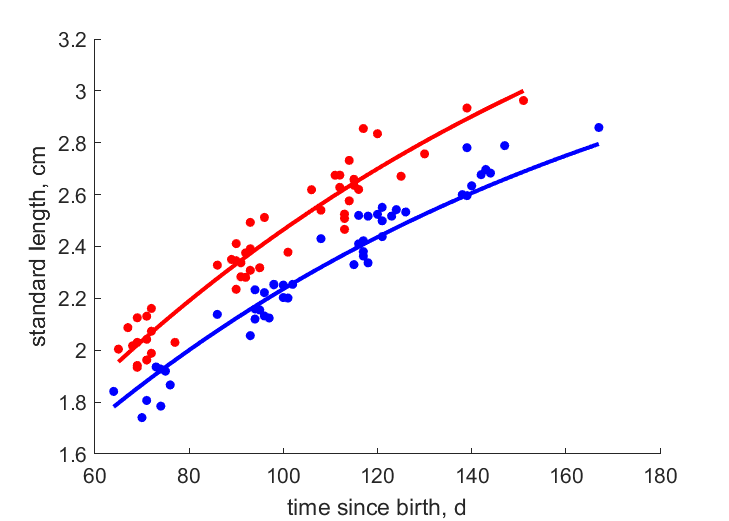 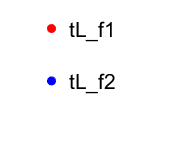 | time since birth | standard length | (0.02797) | Rezn1996 |
| tL_f2 |   | time since birth | standard length | (0.02483) | Rezn1996 |
| tWw_f1 | 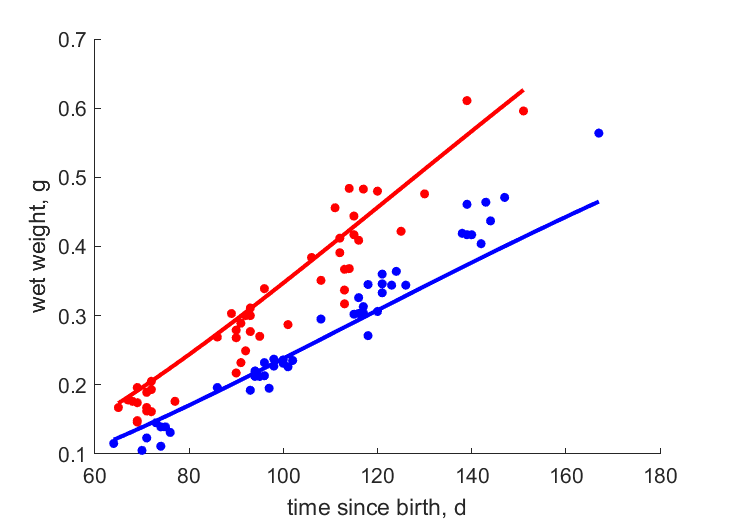  | time since birth | wet weight | (0.1034) | Rezn1996 |
| tWw_f2 |   | time since birth | wet weight | (0.08931) | Rezn1996 |
| LWw_f1 | 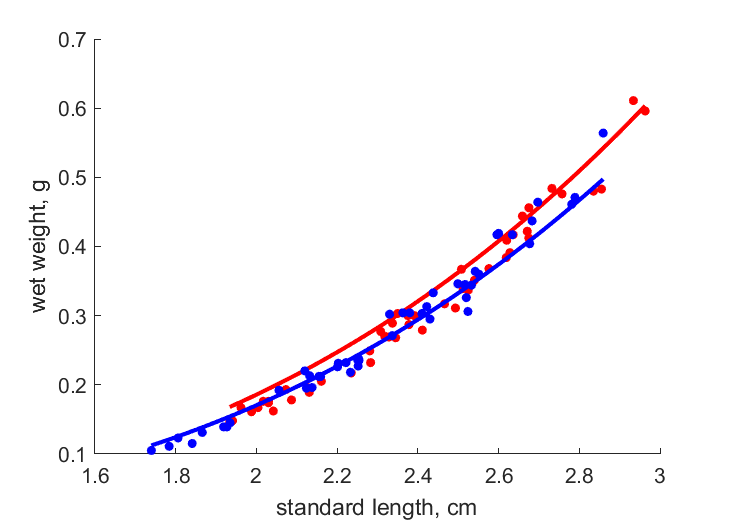 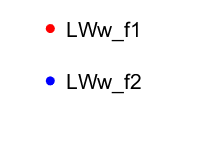 | standard length | wet weight | (0.07648) | Rezn1996 |
| LWw_f2 |   | standard length | wet weight | (0.05127) | Rezn1996 |
| tN_f1 |  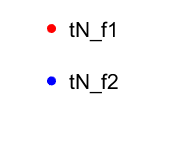 | time since birth | cumulative number of offspring | (0.1493) | Rezn1996 |
| tN_f2 |   | time since birth | cumulative number of offspring | (0.2066) | Rezn1996 |
Pseudo-data at Tref = 20°C
| Data | Generalised animal | Poecilia reticulata HP Cur96 | Unit | Description |
|---|---|---|---|---|
| v | 0.02 | 0.02412 | cm/d | energy conductance |
| kap | 0.8 | 0.6616 | - | allocation fraction to soma |
| kap_R | 0.95 | 0.95 | - | reproduction efficiency |
| p_M | 18 | 132.3 | J/d.cm^3 | vol-spec som maint |
| k_J | 0.002 | 0.002139 | 1/d | maturity maint rate coefficient |
| kap_G | 0.8 | 0.8001 | - | growth efficiency |
Discussion
- This entry is for high predation ecotype guppies, from the Curaguate river in Trinidad. Only females considered
Facts
- The guppy is ovoviviparous, not viviparous, so reproduction is by eggs (Ref: Wiki)
Bibliography